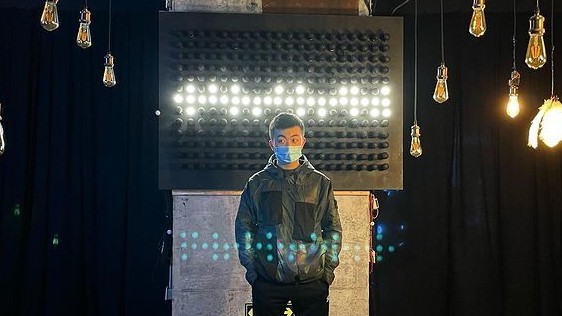Nothing Phone (1) hype is all too familiar
Carl Pei’s game-changing device, the Nothing Phone (1), has a mountain to climb and miles to fall

I’m not buying the Nothing phone hype, and neither should you. I’ve been to the circus, I’ve seen the lions and jugglers, and after 20 years covering phones, I know how this works. The Nothing pitch is a hype engine designed to generate investment. It has as much chance of upending Samsung and Apple as I have of running a 4-minute mile.
To Nothing founder Carl Pei’s credit, he knows how to build hype. In tweets and Wednesday’s detail-light presentation he promised a device, the Nothing Phone (1), unlike anything you’ve ever seen, and unlike anything else.
Pei could fulfill this promise by delivering a phone made of silly putty or some moldable compound. That would be ridiculous, but it would also make his promises true.
Breaking the mold is hard. Smartphones across iOS and Android are all sliding to the middle, a vast gleaming pool of sameness. That sounds bad, but it’s not when smartphones – pocket computers – are knowable devices for even the most tech-averse consumer.
Screens that understand our intentions are what they’re becoming, and market forces continue to carve off outliers in design aesthetic and function. Oddball ideas pop up but never sustain.
The unloved big idea
Look for instance at the short spate of pop-up cameras. OnePlus had one that was so smart it would slide back into the phone body when you dropped the phone. Current OnePlus devices no longer feature it.
Remember Andy Rubin’s Essential phone, another device built on so much hype that it was swimming upstream almost from day one? Its marquee feature was an accessory system. The phone had exposed contacts to which you could attach, for instance, a 360 camera.
Sign up for breaking news, reviews, opinion, top tech deals, and more.
The device was also hobbled by its own native and sub-par camera system. It was supposed to be a disruptive Android phone; Essential as a company did not make it past the Essential Phone 2.
Google tried to build a modular phone system: Project Ara. This LEGO-brick-style concept was also exciting -- and completely impractical. Google eventually shut down the project.
We see right through you
What’s Nothing’s secret sauce? Most think it’ll be a transparent phone, though Pei seemed focused on widgets and interoperability with its own device ecosystem and an as-of-yet-unnamed list of third-party devices.
In recent years, I’ve seen many transparent smartphones and tablets – all in TV shows and movies about the future. I love them and, yes, want them.
The technology to create transparent technology is already here, at least when it comes to displays. LG can show you a broad array of transparent and flexible OLED displays. They are always connected to a very opaque brick of components.
Whatever the company produces this summer, regardless of whether it's “transparent,” Nothing will have to put the CPU (likely a Qualcomm Snapdragon 8 Gen 1 chip), RAM, and the Lith-Ion battery somewhere. If Pei tries to hide the components or squeeze it all down too much, the thing that will likely suffer the most is battery capacity. Most smartphones are shrinking components while growing the batteries because no one can accept anything less than all-day battery life. The Nothing Phone (1) can offer no less.
Leaving aside all the technical hurdles Pei must clear, I’m not sure why everyone is so excited, or why they're basically giving Pei a pass on showing, literally, nothing.
Are we just so desperate for innovation, the thing we think Apple no longer provides and Google is quietly killing in its crib? At least Samsung gives us bendy phones. We’re ready for a smartphone future that no one is really providing. Maybe Carl Pei and Nothing can do it.
Maybe, but I worry that this hype machine will burn through millions more before we see the first, likely prototype device, and then millions more after that before the first Nothing Phone (1) ships to consumers (or backers).
I have seen this story before. All the slavish fans will turn on Pei and pick apart every single build, design, and technical issue. They might miss the breakthrough as they realize the phone is not truly ready to compete with Apple or Samsung -- or even Pei’s old home, OnePlus.
I might be wrong. In fact, I would love to be wrong, but the history of smartphones is littered with the bodies of would-be disrupters who couldn’t deliver on their own hype. Watch where you step.

A 38-year industry veteran and award-winning journalist, Lance has covered technology since PCs were the size of suitcases and “on line” meant “waiting.” He’s a former Lifewire Editor-in-Chief, Mashable Editor-in-Chief, and, before that, Editor in Chief of PCMag.com and Senior Vice President of Content for Ziff Davis, Inc. He also wrote a popular, weekly tech column for Medium called The Upgrade.
Lance Ulanoff makes frequent appearances on national, international, and local news programs including Live with Kelly and Mark, the Today Show, Good Morning America, CNBC, CNN, and the BBC.